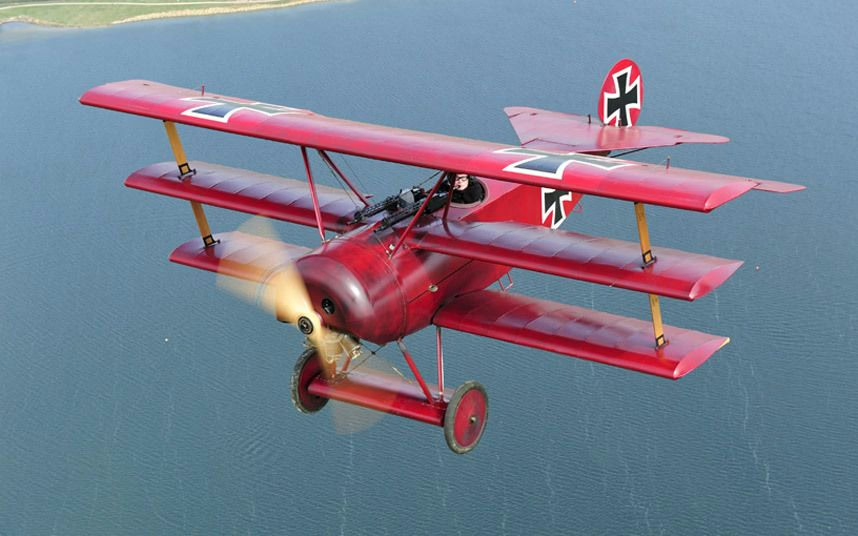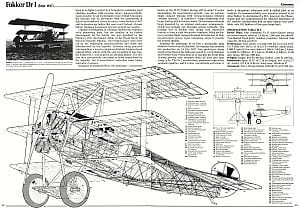Fokker Dr.I History
Such was the impact created in German military circle by the Sopwith Triplane that, apparently believing that the triple-wing arrangement was a magic formula for success, no fewer than fourteen German and Austrian manufacturers produced triplane designs of their own. Most of them did so after inspecting a captured British machine in July 1917, but they were well behind Anthony Fokker, who had seen the Sopwith in action at the front in April. It has often been implied that the Fokker Dr.I Triplane was a copy of the Sopwith Triplane, but Reinhold Platz, who designed the Fokker machine at his employer’s request, had never seen the British aeroplane, and indeed was quite unconvinced of the merits of a triplane layout.
The first three production machines were designated F.I, after which the new Dr. (Dreidecker = triplane) classification was introduced in the summer of 1917. Production Fokker Dr.Is (320 were built up to may 1918) were powered by foreign-built versions of the Le Rhône rotary engine – either the Oberursel UR.II or the Swedish-built Thulin version developing 110 h.p. Experimental installations included the 145 h.p. UR.III, the 160 h.p. Goebel Goe.III and the 160 h.p. Sh.III rotaries, none of these was adopted for service aircraft. In 1917 Platz produced an alternative triplane prototype, the V.6, which had 120 h.p. Mercedes D.II stationary engine, but the V.6 proved more clumsy than the rotary-engined Dr.I, and no further examples were built. Twin Synchronised Spandau guns were mounted on the top-decking to fire between the propeller blades.
The first Fokker Dr.I Triplane aeroplanes began to reach fighter squadrons during August 1917, but during combat a number of aircraft casualties disclosed that the wing structures was still rather suspect and the type was suspended from operations from October to December while attempts were made to rectify this point. The aircraft was then restored to service until the summer of 1918, by which time it had given way to the Fokker D.VII.
A number of celebrated German pilots flew the Fokker Dr.I Triplane, among them Werner Voss of Jasta 10, who, when he died, had a total of 48 Allied aircraft to his credit and the legendary Manfred von Richthofen – the “Red Baron”, who was killed on 21st April, 1918 while flying an aeroplane of this type.
The Fokker Dr.I Triplane reached its peak of service early in May 1918, when one hundred and seventy-one were in front-line service. Later that month production ceased, and thereafter the Fokker Dr.I was transferred to home defence until the Armistice, at which time sixty-nine were in service.
Fokker Dr.I Specifications
| Aircraft Type: |
| fighter |
| Dimensions: |
| wingspan: 23 ft, 7 in |
| length: 18 ft, 11 in |
| height: 9 ft, 8 in |
| Weights: |
| empty: 904 lb |
| gross: 1,289 lb |
| Power plant: |
| 1 × 110 hp Oberursel rotary engine |
| Performance: |
| maximum speed: 103 mph |
| ceiling: 20,013 ft |
| maximum range: 150 mi |
| Armament: |
| 2 × 7.92 mm calibre machine guns |
| Operational Use: |
| 1917–1918 |









